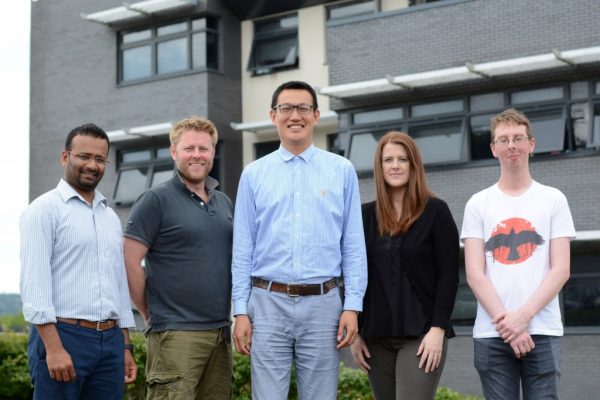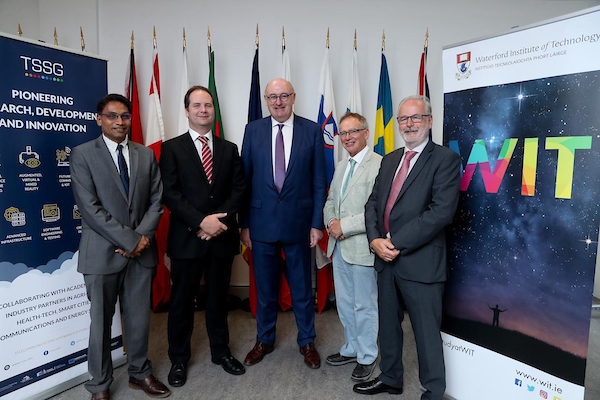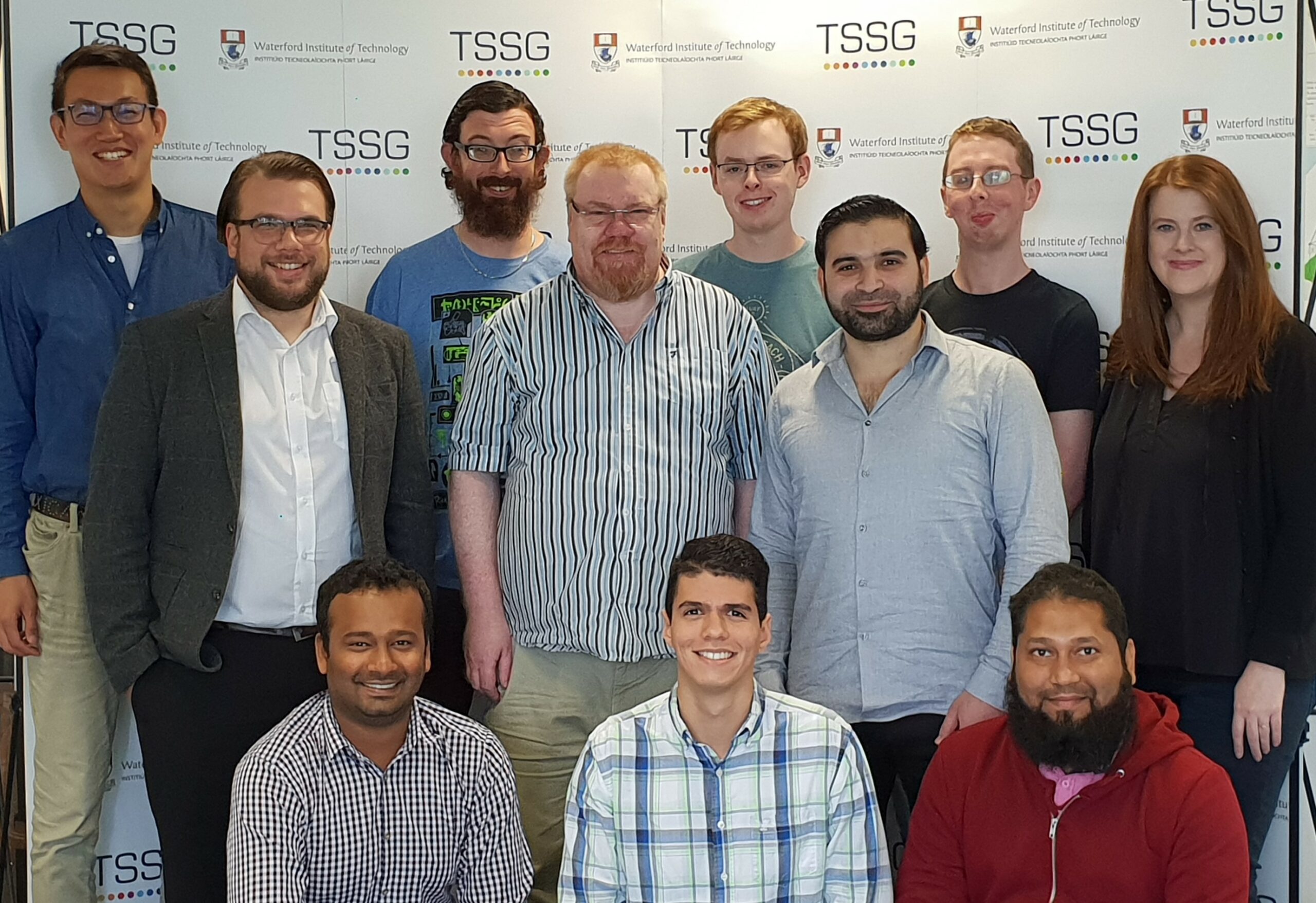TransSec – What's next?
Tags:
TransSec team at TSSG is comprised of four members within the Mobile Ecosystem and Pervasive Sensing (MEPS) Research Unit, starting with Technical Lead, Martin Tolan, who serves as Work Package leader for Work Package 9: Dissemination & Exploitation. TSSG also serves as lead beneficiary on Work Package 6: V2X Communication, which is led by Ruisong Han. In addition to the Work Package leaders, two other developers, Nithin Padmaprabhu and Ryan McCloskey, form the remainder of the TransSec team at TSSG. Below is further details on the TransSec project including future applications and opportunities to diversify the technology into multiple industries. (Click here for the full press release)

Photo Caption: The TransSec Project Team: From left: Nithin Padmaprabhu, Software Researcher; Martin Tolan, TransSec Work Package Leader; Ruisong Han, TransSec Work Package Leader; Frances Cleary, TSSG MEPS Research Unit Manager and Ryan McCloskey, Software Researcher.
Other applications for TransSec
TransSec is a project with specific objectives in the area of transport security and safety. However, the project’s success would have a slight knock-on effect on other sectors, primarily healthcare and emergency services. As TransSec establishes pre-crash prevention mechanisms, this would lead to a reduction in road traffic incidents and fewer injuries requiring medical treatment, along with potential reductions in stress levels for drivers operating in dangerous areas.
Use in domestic vehicles
Technologies developed for TransSec could potentially be introduced into domestic vehicles in the future. TransSec uses ubiquitous sensors and equipment which can be fitted to any vehicle, with the innovation of TransSec being in the application and fusion of these components and technologies. Heavy-goods vehicles are not alone in their potential for misuse, so there remains scope for TransSec technologies to potentially be introduced to more domestic vehicles in the future.
Technologies used in TransSec
TransSec provides an innovative blend of a wide variety of technologies in its operation including sensor data fusion, computer vision algorithms, precision positioning systems using GNSS/Galileo, V2X communications, eCall, and elements of autonomous driving for emergency maneuvering situations.


Images: European based TestBeds
EU Partners
Daimler AG is a globally-leading producer of premium passenger cars, and the largest manufacturer of medium and heavy-duty trucks in the world, with production facilities on five continents and selling in nearly all countries of the world. Daimler is the initiator and coordinator of the TransSec project, with its lead functions being Project Coordinator, Project Management and Autonomous Emergency Maneuvering systems to prevent crashes.
TeleConsult Austria GmbH (TCA) was founded as a spin-off from Graz University of Technology and today covers the fields of precise positioning and reliable navigation. TCA contributes specialist knowledge and experience in GNSS positioning, sensor data fusion and GNSS security to TransSec.
Vicomtech is an applied research facility which specialises in interactive computer graphics and multimedia, and is located in San Sebastian, Spain. Vicomtech’s main research area is in the field of computer vision, computer graphics and interaction, and will offer expertise in such computer vision technologies to TransSec in aid of environmental understanding and evasive manoeuvre calculations in real-time.
TSSG is an internationally-recognised centre of excellence for ICT research and innovation, with core expertise in the areas of telecoms networks, security and mobile services. The responsibility of V2X communications systems within TransSec lies with TSSG, as well as handling the bulk of Dissemination and Exploitation activities.
The University of Stuttgart has achieved a worldwide reputation for excellence in the fields of mobile and information technology, production, process engineering and life sciences. The University of Stuttgart is responsible for the road and environment mapping for TransSec. Its task is to design, develop and prototype implementation of a map to include static environments as well as an electronic horizon provider for the vehicle based on a map-matching algorithm, before a local dynamic map is finally generated using information gathered from the current situation.
https://youtu.be/TRV4AYVeiuw
]]>




